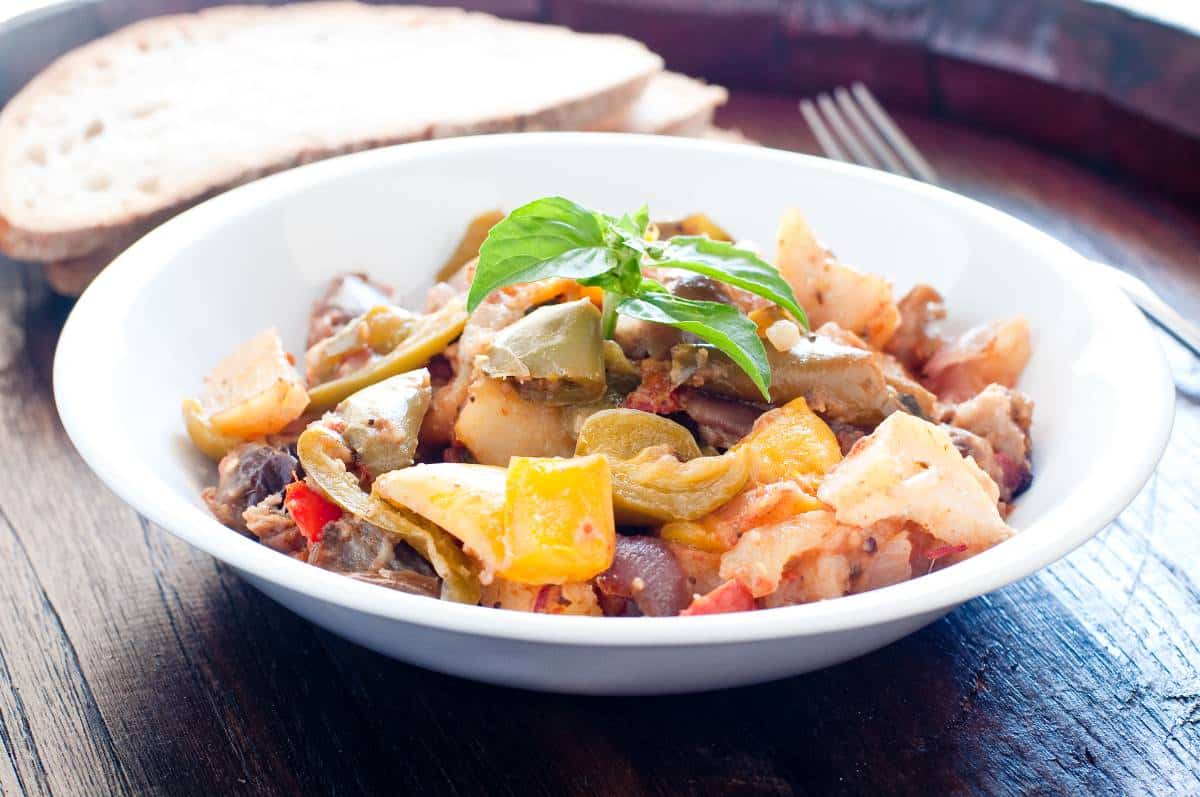It proudly bears the banner of his tradition, which has long seen it as a protagonist among the delicacies of Sicilia. It has the merit of delicacy and was once prepared with fish, from which it seems to derive its name, or from “capone”, fish from fine meat – today called lambuga – seasoned with sweet and sour sauce. Another hypothesis, however, sees the etymology attributable to “caupone”, a term that indicates the taverns of the sailors, who used to stop in these places of refreshment. And it’s not over here. Other theses argue that it could derive from the Latin noun “caupona” – taverna – and from the adjective “cauponia”, with the meaning of “taverna food”. In short, if the variations of Sicilian caponata are innumerable, so are the origins of its name and also of its history. Replaced the fish with aubergines, here is nowadays this colorful and tasty dish.
Ingredients
3 large ripe tomatoes
half a red bell bell pepper
half a yellow bell pepper
half a green bell pepper
1 celery stalk
1 medium eggplant
1 onion
60 grams black olives
20 grams of raisins
20 grams pine nuts
20 grams salted capers
white wine vinegar
extra virgin olive oil
1 tablespoon of sugar
salt to taste
Method
Cut the eggplant into cubes – leave the skin on, the caponata will be more flavorful -, sprinkle it with salt and let it drain on a sieve for an hour so that it loses the bitterness of the aftertaste. Now take the tomatoes, remove the seeds and cut them into cubes, then clean the peppers-removing the seeds and internal ribbing-cut them into squares, then wash the celery stalk and slice it. Put extra-virgin olive oil in a frying pan and, once hot, dip the eggplant cubes in it; they should turn a nice golden color. With a spatula, take the cubes and lay them on a plate with paper towels to remove excess grease. In a frying pan put the onion sliced into rounds and sauté it for a couple of minutes in the oil, then add the peppers and cook them for a few minutes, then add the capers-previously desalted under running water, the tomato cubes, the raisins soaked for ten minutes in warm water, the olives and pine nuts. Stir well, cook about fifteen minutes, and finally add the eggplant and cook for another five minutes. At this point you can add the vinegar and sugar and cook everything on low heat for five or six minutes, letting the vinegar evaporate completely. You can put in the salt at the end of cooking. Let it rest in the refrigerator for at least an hour and serve at room temperature. To allow the flavors to blend best together, you can also prepare the caponata the day before serving it on the table.



0 Comment